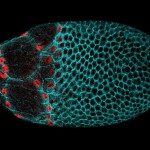Link to Pubmed [PMID] – 18292231
Proc. Natl. Acad. Sci. U.S.A. 2008 Mar;105(9):3398-403
Conversions of signaling gradients into sharp “all-or-none” borders are fundamental to tissue and organismal development. However, whether such conversions can be meaningfully reduced to dissociated cells in culture has been uncertain. Here we describe ultrasensitivity, the phenomenon equivalent to an all-or-none response, in dissociated neural precursor cells (NPCs) exposed to bone morphogenetic protein 4 (Bmp4). NPC ultrasensitivity is evident at the population and single-cell levels based on Msx1 induction, a well known Bmp target response, and occurs in the context of gene expression changes consistent with Bmp4 activity as a morphogen. Dissociated NPCs also display immediate early kinetics and irreversibility for Msx1 induction after brief Bmp4 exposure, which are attractive features for initial border formation. Relevance to border formation in vivo is provided by Bmp4 gain-of-function studies in explants and evidence for single-cell ultrasensitivity in normal and mutant Bmp gradient contexts in the developing forebrain. Together, these studies demonstrate relatively simple, robust, and reducible cell-intrinsic properties that contribute to developmental border formation within a signaling gradient.
